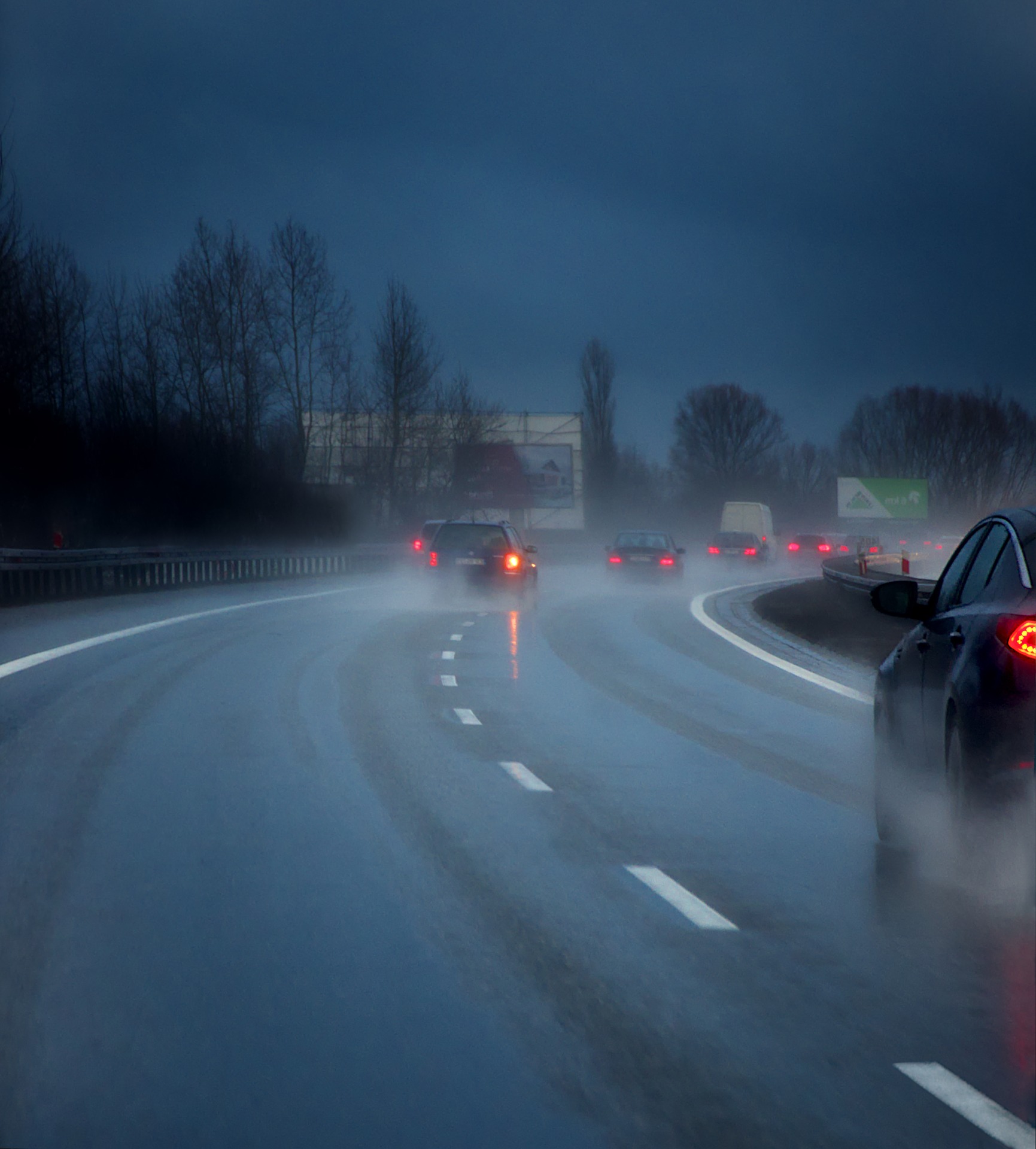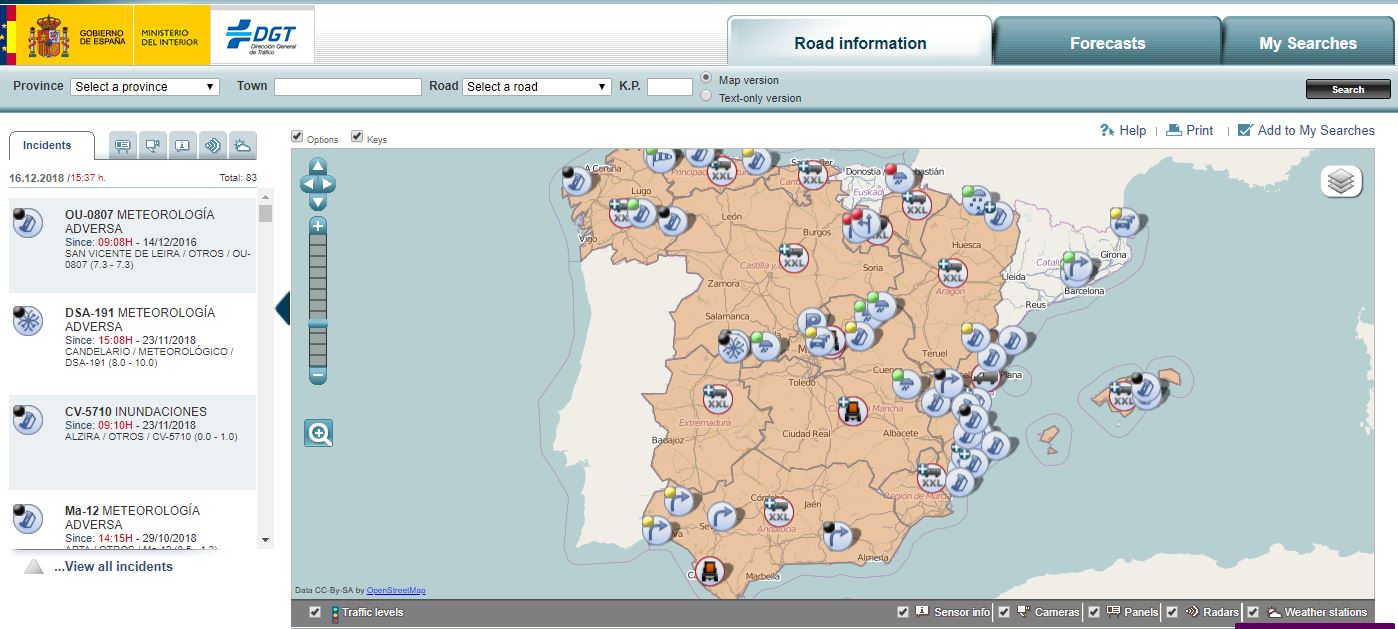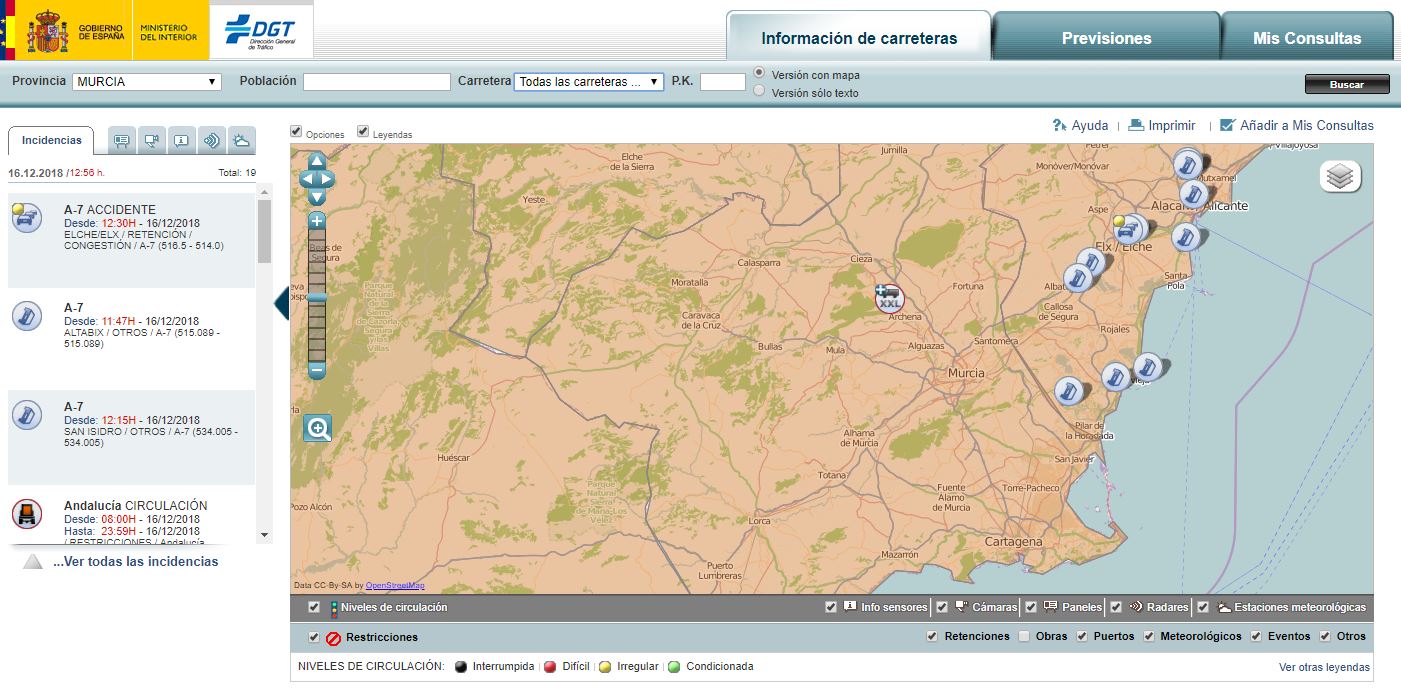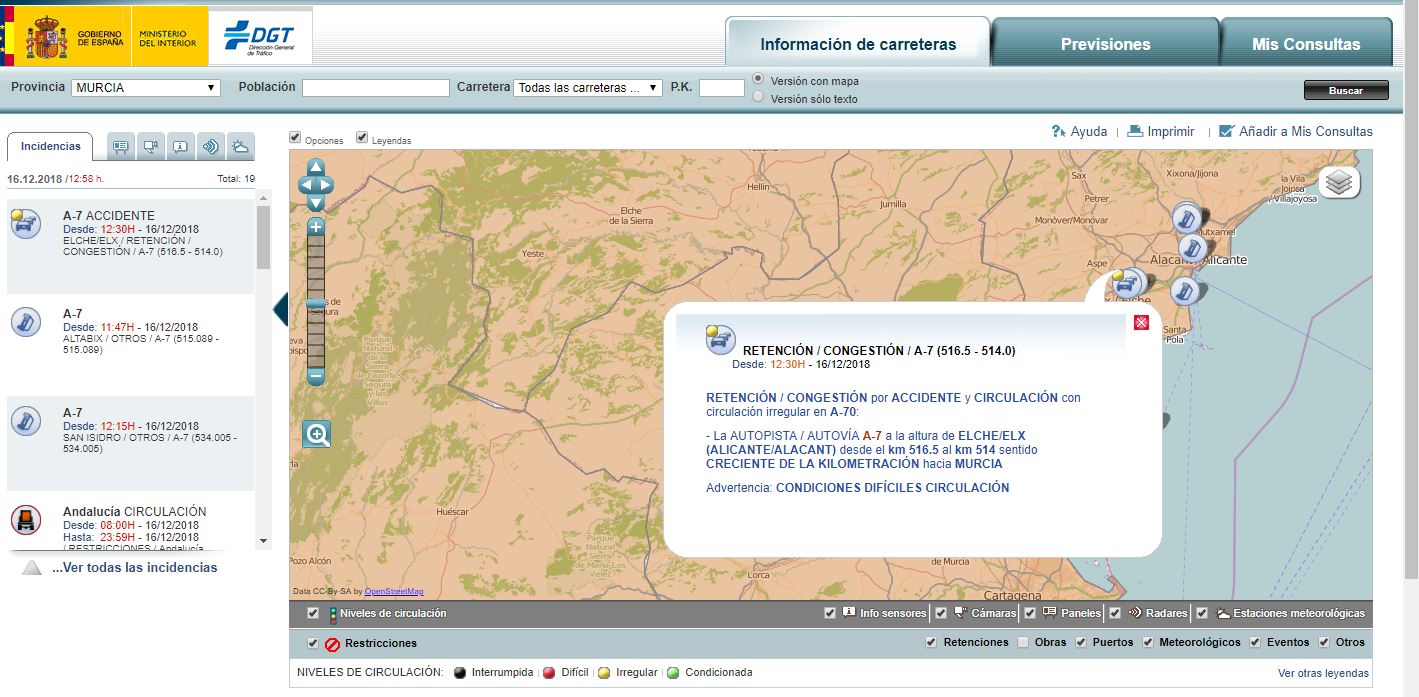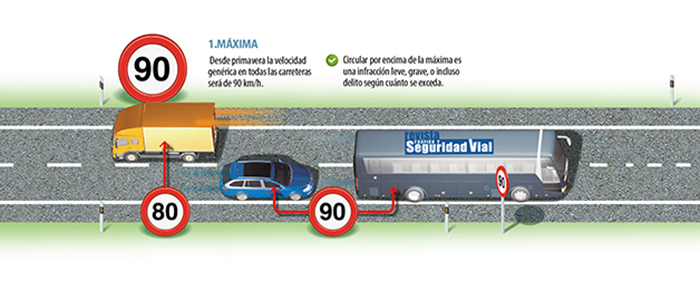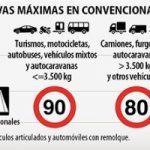During the winter months Spain can be subjected to some very heavy rain. On some occasions. rather than a prolonged consistent rainfall it can be quick and torrential with a huge amount of water falling in a very short space of time. Weather a downpour or a steady stream of rain the result can be standing water on roads, which is an obvious danger to the motorist.
It might seem obvious but in wet conditions the first thing you should do is reduce your speed. The vehicle grips the road through the tyre and when the road is wet the tyre has less adhesion to the road. The result is it takes longer to slow down. So reduce your speed and remember to respect the distance between you and the vehicles in front. If it is going to take longer to slow down, then the gap between you and the vehicles ahead should be increased.
How does aquaplaning happen?
One of the problems of water on the road is that it can accumulate in front of your tyres and build up quicker than the tyre and weight of the vehicle can disperse it. The result is that a layer of water builds up under the tyre and you lose contact with the road. The problem is enhanced the faster you are driving and the deeper the water but there are also other factors that influence the possible chances of aquaplaning which we will come on to. Further danger occurs when you suddenly come across a puddle which can be difficult to see.
If you lose contact with the road surface due to aquaplaning, you will hear the engine noise increase and the wheels will start spinning. This can be particularly dangerous if you are cornering as you will begin to skid. If the vehicle has slid and the tyres regain traction, then the vehicle may suddenly jolt as it corrects its trajectory to the direction of the tyres.
How to recover from aquaplaning
If you start to lose control of the vehicle due to aquaplaning and you are travelling in a straight line, then ease off the accelerator to give the vehicle a chance to regain grip of the tarmac. Trying to change direction may cause the vehicle to slide. If you need to brake, then do it calmly as the vehicle could become unstable.
If the phenomenon occurs whilst you are turning or you start to skid, then take your foot off the accelerator and despite your natural reactions, turn the steering wheel gently in the direction of the slide as this should help you regain grip.
Once you have recovered control of the vehicle pull in somewhere safely and catch your breath for a few minutes.
How to avoid aquaplaning
As always the best advice is to avoid the situation in the first place. If there is a lot of rain do you need to drive your vehicle at all?
Reduce your speed.
Increase the distance between you and vehicle in front.
You can also reduce the chances of aquaplaning by ensuring your tyres are roadworthy. Worn tyres will be more susceptible to aquaplaning. Under inflated tyres can also increase the problem, so you should check tyre pressure regularly.
